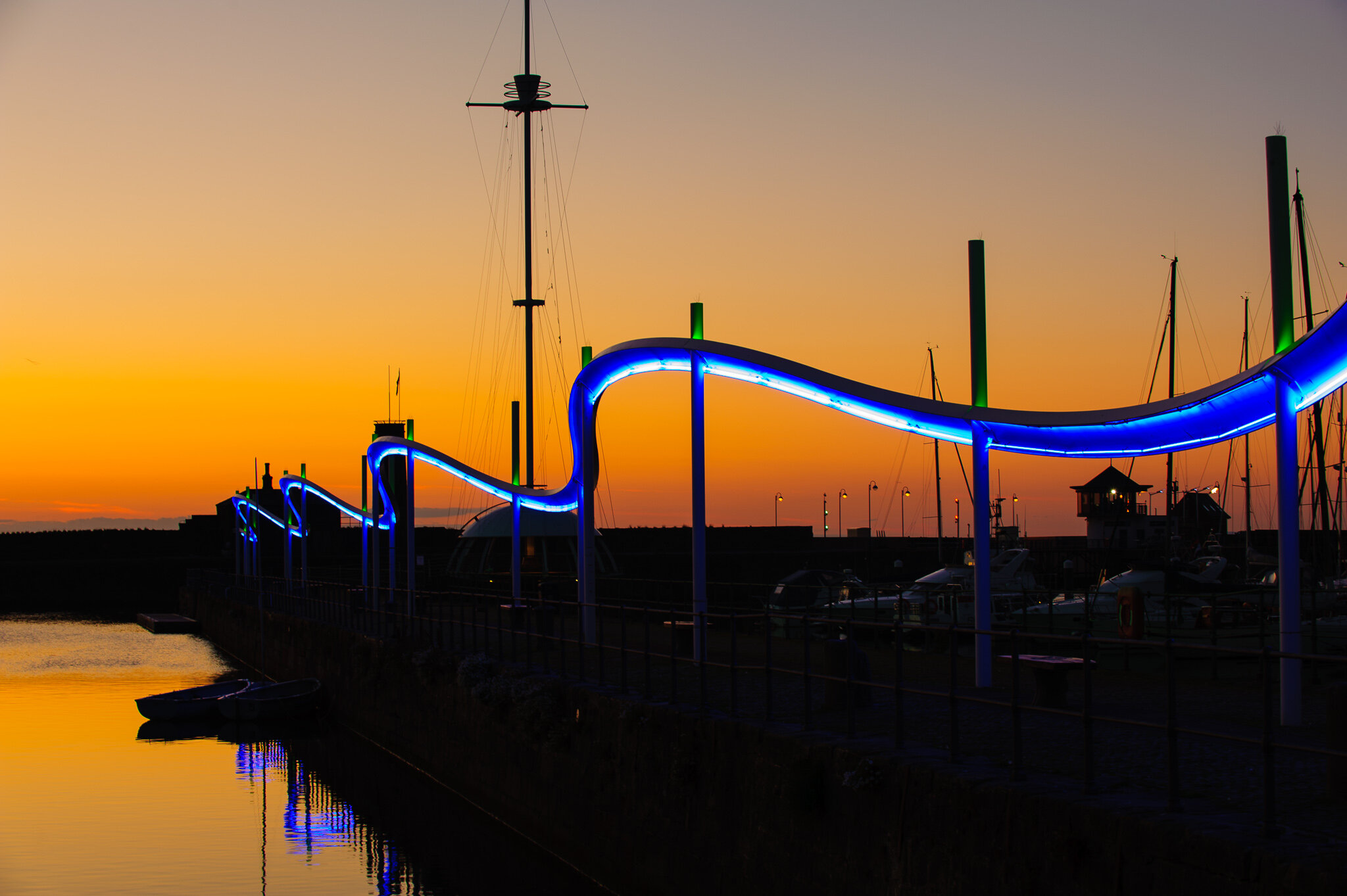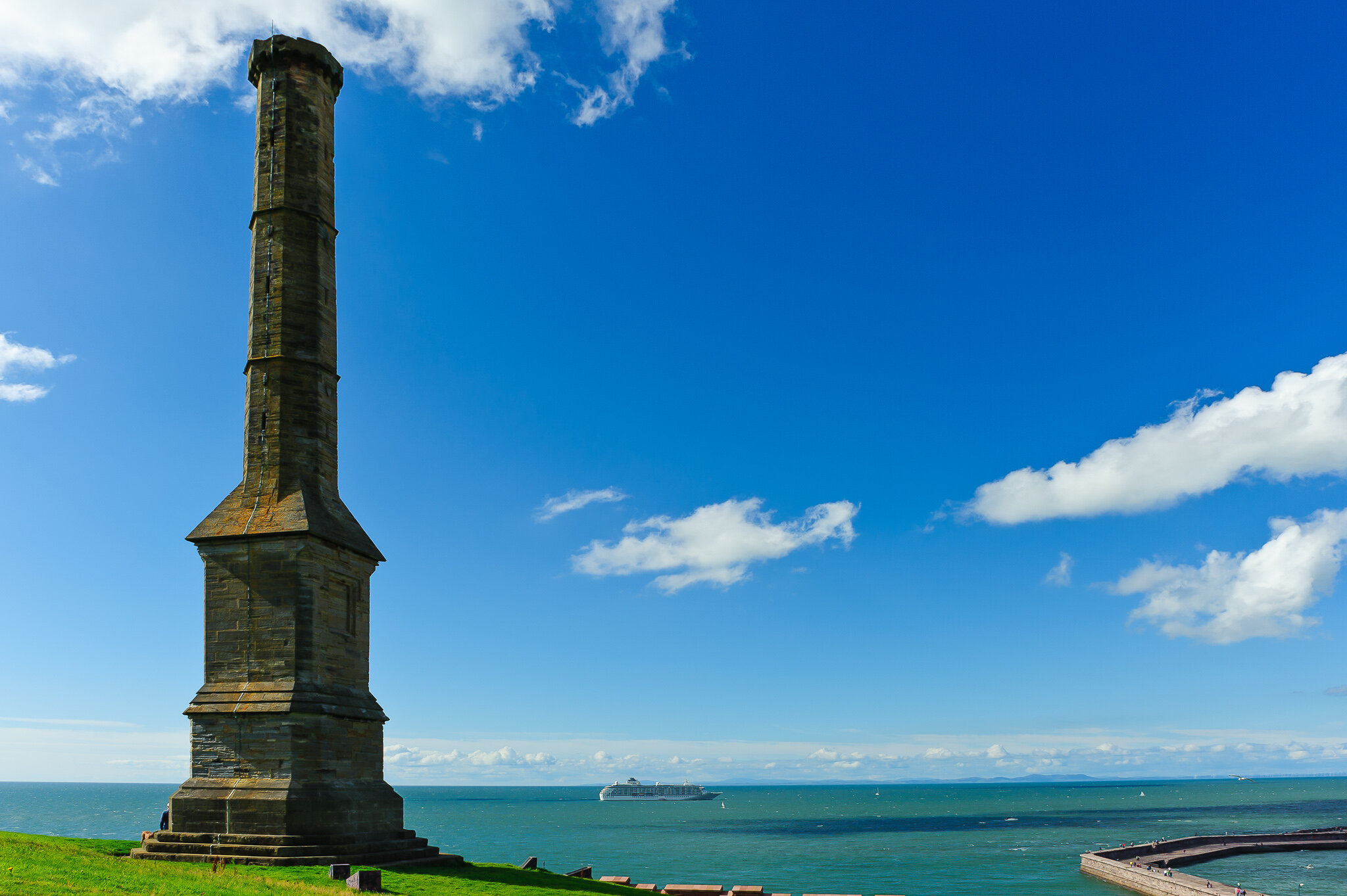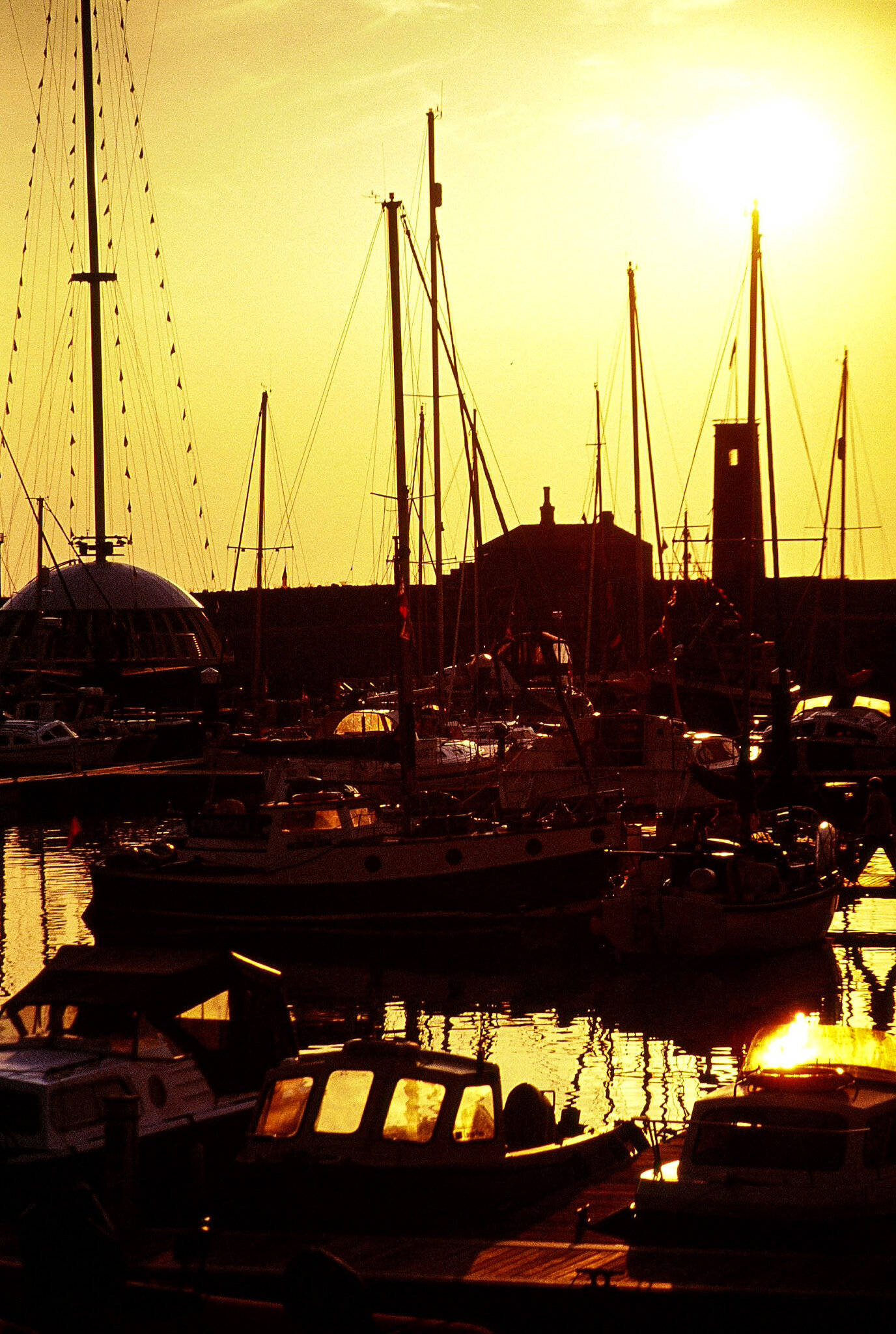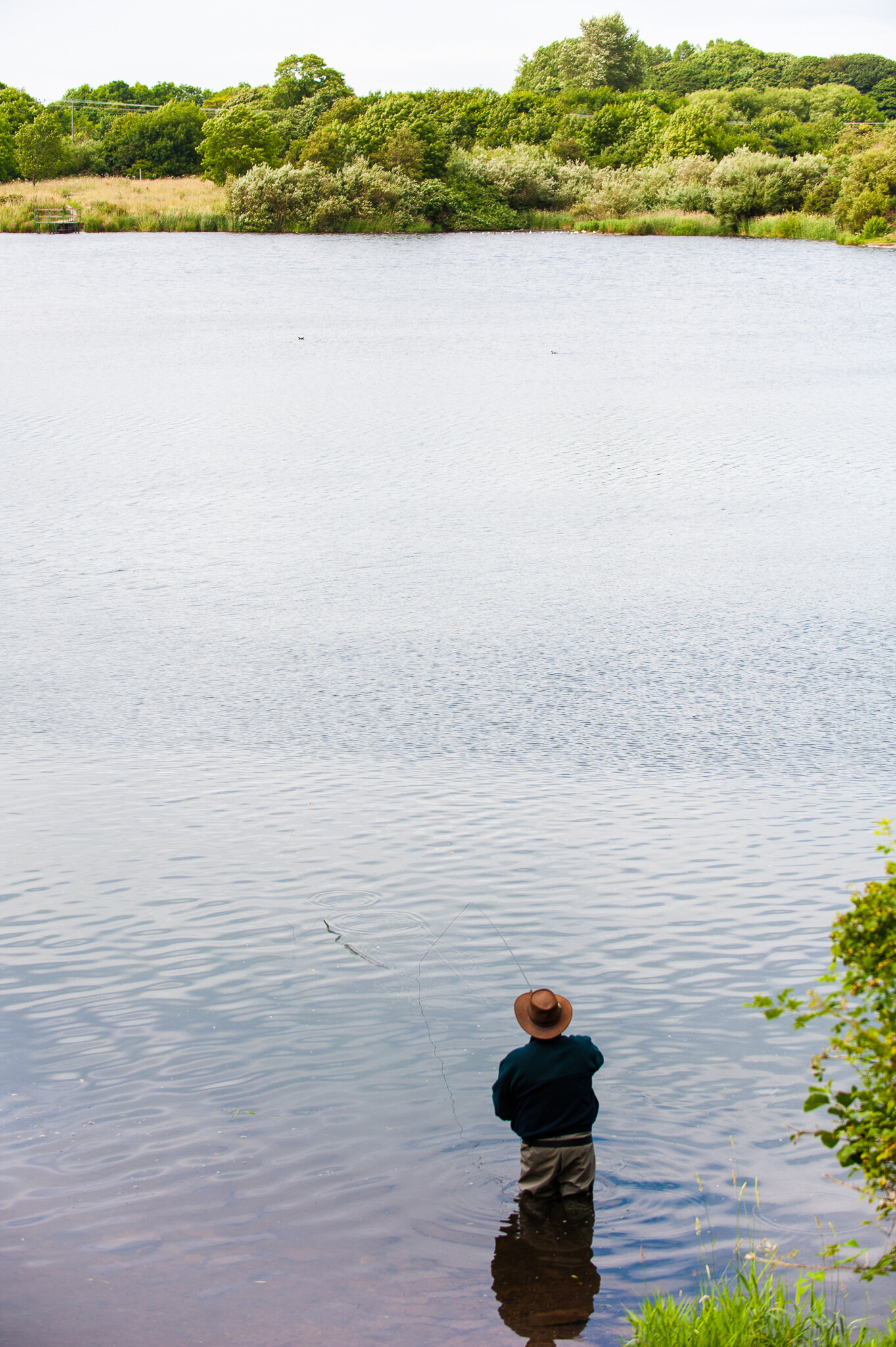Whitehaven
Whitehaven is a delightful Georgian town having its street grid pattern and buildings largely still intact and with its redeveloped harbour and marina signifying the town's rich maritime heritage.
Whitehaven’s attractive harbour area and elegant Georgian townhouses are reminders of its growth from a simple fishing village to become England’s third largest port in the 18th century, with iron and coal being Whitehaven’s main exports. Whitehaven has been designated a "gem town" by the Council for British Architecture due to the historic quality of the town environment and over 170 listed buildings.
The Millennium Wave illuminated in all of its glory in front of a spectacular orange sunset at Whitehaven harbour
Today, this heritage forms an important part of Whitehaven’s appeal as a tourist destination. The harbour has benefitted from £20 million of grants since 1990, helping to improve the marina and public access to the waterside area. Many maritime festivals have subsequently been hosted here, including several gatherings of tall ships. The harbour faces westwards so offers an ideal location for sunsets, particularly silhouetting the harbourside statues against the setting sun.
The Beacon Museum provides an excellent view over the harbour as well as hosting several major photographic exhibitions.
There is also a prominent ‘chimney’ overlooking the harbour, known as The Candlestick. This is all that remains of Wellington Pit coal mine. This coal mine was the scene, in 1910, of Whitehaven’s worst mining disaster, resulting in the deaths of 136 miners.
A line of cliffs rises to the south of the town, reaching a high point of about 300ft at St Bees head There is a seven-mile walk along these cliffs to the seaside village of St Bees providing coastal views along the way.
The Candlestick overlooking Whitehaven harbour is all that remains after the Wellington Pit disaster, seen here welcoming the arrival of The World cruise ship.
Haig Pit Mining Museum is located on the cliffs at Kells to the south of the town. The museum has the last coal winding headgear in the region and due to its location on the west coast this can form a striking silhouette at sunset.
Nearby, Clints Quarry Nature Reserve, at Egremont, is a fascinating place not only for wildlife, but for the geology and industrial archaeology which is still noticeable across the nature reserve. Damp conditions between the quarry spoil heaps are ideal for northern marsh and common spotted orchid, whilst the drier slopes of the heaps have been colonised by wild strawberry, oxeye daisy, mouse-ear-hawkweed, carline thistle, rough hawkbit and pyramidal orchid . Bee orchids are also found here at one of the most northerly sites in England. The flowers and grasses of the quarry are an ideal habitat for butterflies including common blue butterflies, orange tip, gatekeeper, ringlet, and meadow brown butterflies. There are four ponds on the nature reserve and frogs and toads breed here. You can also find palmate newt, stickleback and pond snails. The eastern part of the nature reserve is wooded providing habitat for a range of woodland birds.
Longlands Lake, between Egremont and Cleator Moor, is another nature reserve that supports an abundance of wildlife. The lake is important for its bird population including mute swan, coot, moorhen, goosander, tufted duck and mallard among others. There is a gentle circular walk, suitable for wheelchair users, pushchairs and toddlers with paths that are made from compacted finely crushed stone, suitable for all weather use.
Whitehaven sunset
Fishing at Longlands Lake
Getting There:
Whitehaven is easily accessible from the A595 which passes the town.
Continue south on the A595 towards Egremont for Clints Quarry and Longlands Lake nature reservers. Just before Egremont, turn off onto the A5086 at the roundabout at the bottom of Clints Brow (signposted Cockermouth). After 400yds or so take the left turning to Woodend. Clints Quarry Nature Reserve is on the left after a further 400 yds.
For Longlands Lake, return to the A5086 towards Cockermouth. Go under the old railway bridge and turn right just after the showroom, signposted Longlands Lake.
Whitehaven Harbour Grid Ref: NX 969 184
Clints Quarry Nature Reserve Grid Ref: NY 009 123
Longlands Lake Nature Reserve Grid Ref: NY 011 126




